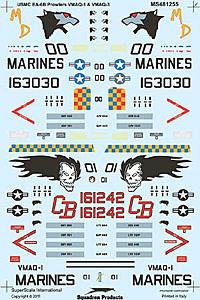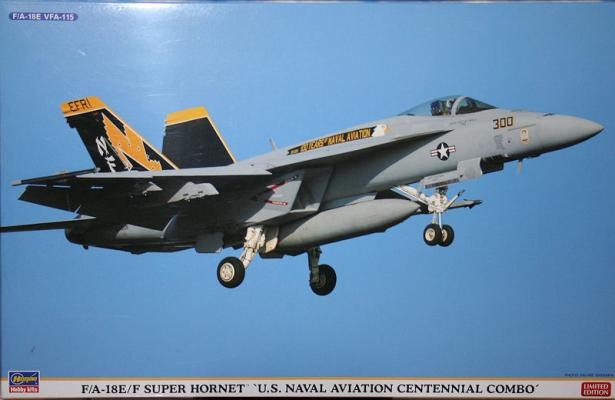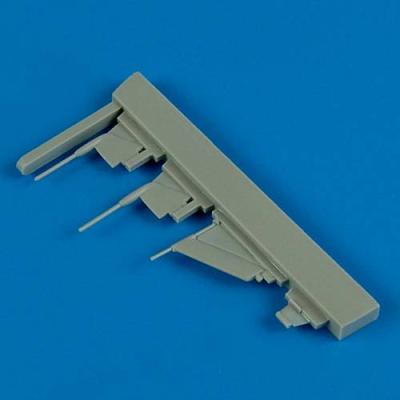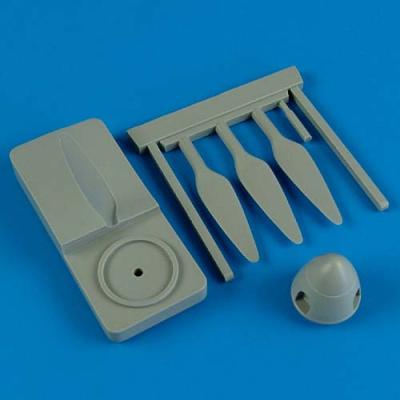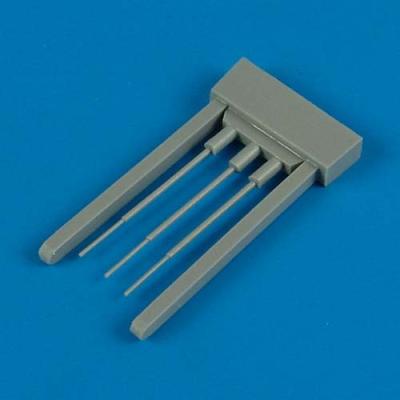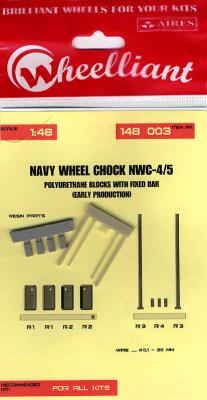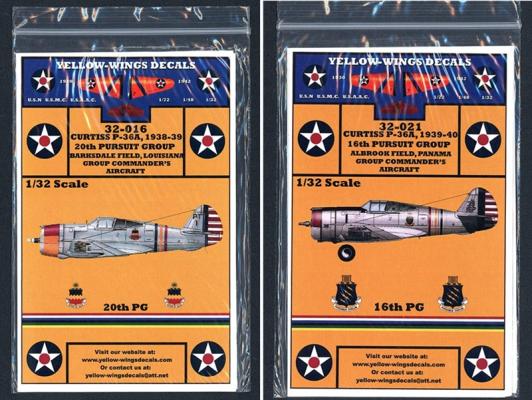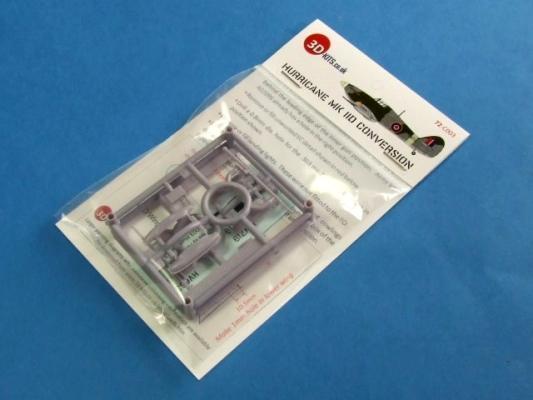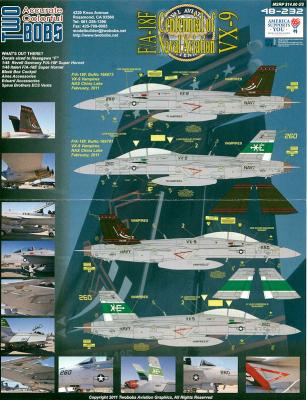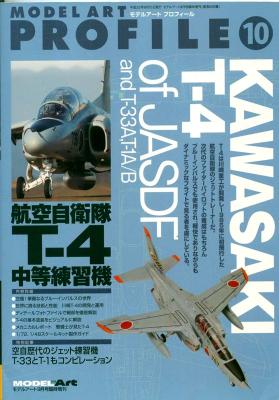Thanks to Gary Newman of Squadron/Signal and IPMS/USA for allowing me to review this decal sheet.
The F/A-18 Hornet has been around for a while, and it looks to be almost as big a winner as its predecessor, the F-4 Phantom. One of the stories going around St. Louis in the 90s was that the plant wanted to build 5058 Hornets, one more than the production run for the Phantom. Well, the production line is still open, and they’re past 1100 now.
The F/A-18 E and F are different aircraft from the A to D models. The whole plane is larger, the engines are more powerful, and it’s stealthier. The engine intakes are square and the landing gear doors have sawtooth edges, which reduce radar return.
Here’s a picture of my recent CF-18A with the F/A-18E.
The Kit
You get two kits in separate plastic bags. The only difference between the two kits is that the F model has a longer canopy. Otherwise, they’re part-for-part the same kit. You even get two ejection seats and the extras for the rear cockpit with the E.
The Detail Parts:
Quickboost offers a set of four antennas for the Trumpeter Su-24M in 48th scale. The parts are “scaled” appropriately for 48th and that, of course, means the parts are rather small and delicate. Caution must be the rule when removing the parts from the sprue and then, again, when attached to the aircraft.
Upon first glance, one will think that Quickboost has relaxed its consistently high standard of quality. The antennas appear to be covered with flash. But look again and you will see that this is not the case. Quickboost has supported the parts while on the sprue with a thin layer of material that protects the parts and provides additional “contact points” between the parts and the sprue. This extra material is easily removed and causes no difficulty when using the parts.
The Detail Parts:
We all know what a propeller is, but what is this “tool” of which we speak? Trumpeter provides a block of resin with a “bed” for the prop blade to be placed into, and a locating hole and ring for the spinner. When placed into the “bed” the prop will assume the correct angle for alignment with the spinner. Using this tool, which is also included in many of the other Quickboost prop sets, alignment of exactly the same angle and orientation will be achieved for each of the three blades. What a great idea!
The Detail Parts:
Quickboost has a well established reputation for offering detail parts that are of excellent quality and this product maintains that reputation. There are three Pitot Tubes on a single sprue, bracketed by “goal posts” which serve to protect the Pitot Tubes.
This product is designed to be used with the Italeri Ju-87B-2 Stuka. Upon examination you will see that the Pitot Tubes can be used on other subjects but they are designed for the Italeri kit. Each Pitot Tube measures 11/16th of an inch in length, and, to the best of my ruler’s ability, slightly less than 1/32nd of an inch in diameter at its base. The tubes have a constant diameter for the first 15/32nd of their length, and then the diameter reduces by about half to the end, or forward tip of the tube. In short, the tubes are very small and have a “scale appearance” in all regards.
Product/Stock #
- 148 003 Navy Chock/ Bar (Early Production) $5.99
- 148 002 Universal Navy Chock/Rope (Early Production) $4.99
- 148 006 Universal Navy Chock/Rope (Late Production) $4.99
Anyone’s who’s seen the Aires line of detailed aftermarket aircraft parts is well aware of the high quality and attention to detail that goes into all their products. Now, Aries has dug even deeper into scale modeling minutiae with their offering of these 1/48th scale Wheelliant resin wheel chock sets. These ubiquitous pieces of equipment are on hand wherever Naval Aviation is found, on land or at sea.
Yellow Wings Decals has released two new decal sets that provide optional marking for Special Hobbies’ 1/32 scale Curtiss P-36A kit. Each of the decal sets is packaged in a typical zip-lock sleeve along with a comprehensive color 4-view instruction sheet with supplemental sheets that include application and placement instructions, and brief historical information. These sets exhibit the same high level of quality as all of the other decal sets currently available from Yellow Wings Decals.
To counter Axis armor, the British introduced a tank busting version of the Hurricane. Armed with two Vickers 40mm cannon they had the same effect as an armor-piercing rocket, but were four times more accurate. First fitted to the Hurricane as the Mk IID, they were also used on the later Hurricane Mk IV. Hurricane IIDs saw service in North Africa, the Far East and in the UK.
Twobobs Aviation Graphics continues to release decals to celebrate the special paint schemes that the US Navy is using to celebrate the 100th Anniversary of Flight (Centennial of Naval Aviation or CONA). Each decal sheet contains markings for these special aircraft, and a 3” sticker with the CONA official logo is included in the packaging. Twobobs actually has an official licensing agreement with the Navy to bring these decals to us in the hobby world! As always, this Twobobs release features decals that are thin, crisp, and in perfect register.
Packaging is the usual clear zipper bag we see decals in, and inside is a one page, double sided, full color sheet which contains color information, the decal placement directions, and some images of the actual aircraft. This package contains one “standard size” decal sheet as well as a smaller insert sheet, along with the 3” sticker mentioned earlier. Decals are printed by Microscale Industries for Twobobs.
Kawasaki T-4 of the JASDF and T-33A, T-1A/B is the newest book in the series of “Profiles” by Model Art. This is #10 in the series and is just as good as the rest.
This softbound book contains 136 pages and is jammed packed with color photos, line drawings, and color profiles of the aircraft.
As you would imagine the main focus of this book is the Japanese Kawasaki T-4 Trainer. It is covered here in photo detail, and this book will be a great help to anyone building one of the Hasegawa kits. The first 16 pages are full color images of different units operating the T-4. Many of these are very colorful – including the Blue Impulse demonstration team. Pages 18-26 contain some background and development information on the T-4. While the vast majority of the text in this book is in Japanese, these pages have an English translation at the back of the book!

